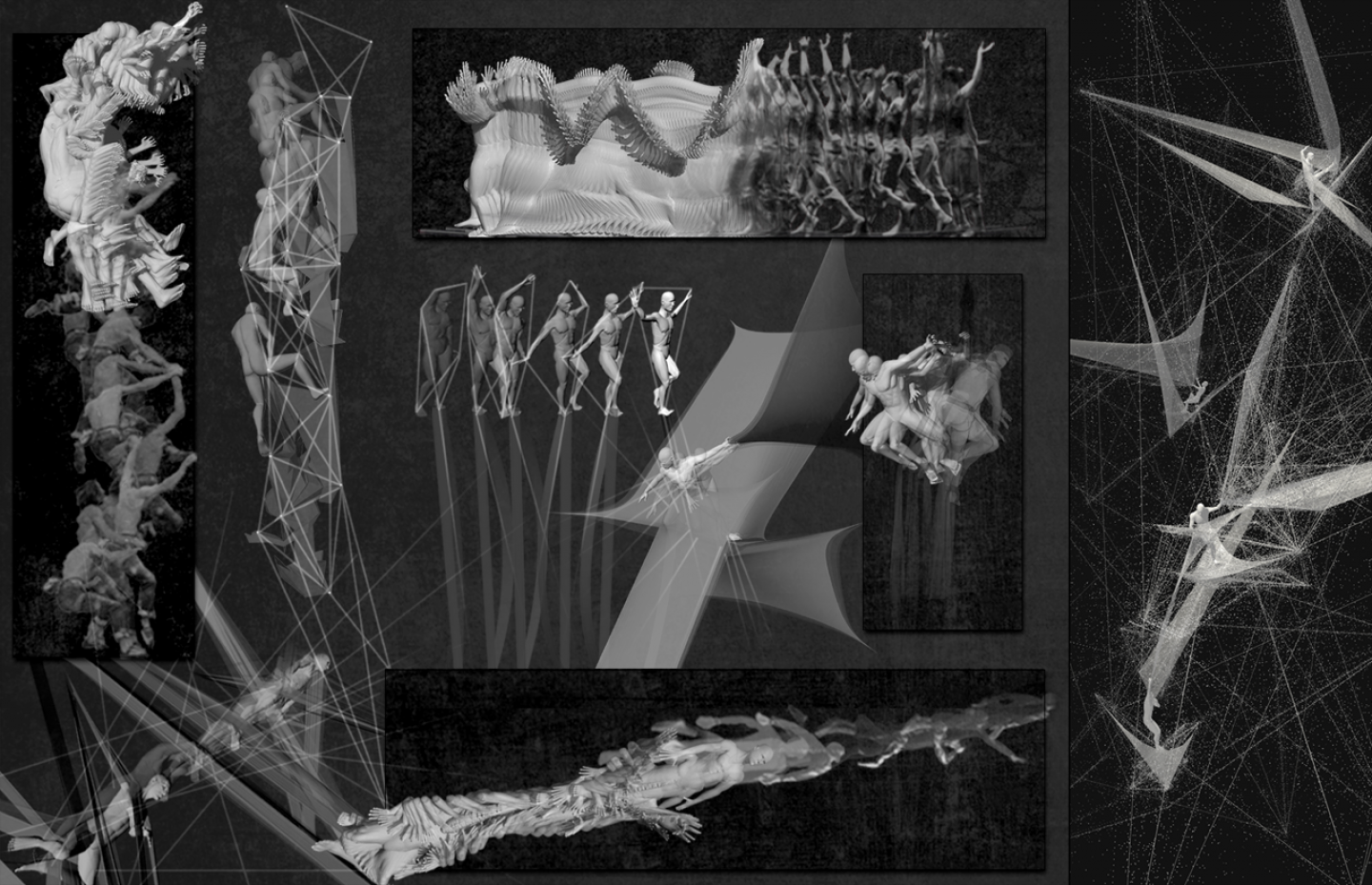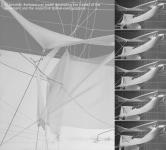The subject of this dissertation stems from a personal reflection on the relationship between space and the body movement. How has architecture approached the human body over time? How does space shape our movement and how does movement in turn affect it? To what extent have architectural and kinesiological expressions been standardized? Researching these issues created the need to redefine the relationship between space and movement and to experiment anew on it. So the problematic of this thesis followed: how could space adapt to the movement of the human body, respond to it, allow it happen, but not force it?
Initially, we investigated movements that could become the focus of our study. Characters in the circus, street artists, athletes – all having special moves containing the element of exaggeration were investigated. We finally selected four extreme characters as our case studies: the climber, the tightrope walker, the diver and the aerialist. The experimental process was common to all four cases. At first, we recorded each movement through chronophotographies, which formed the basis for the analysis of the structural and constituent elements of each movement. This allowed us to focus on qualitative data, universal for all users (such as forces, pressures, attractions, and handles) for subsequent experiments. Then through an animation program we produced three-dimensional snapshots of the selected movements essentially forming their territorial traces. Having captured those movements in three dimensions, and having selected the design elements and triggers, we started the investigation of their relationship with space. By introducing different spatial elements including lines and surfaces, we studied both the execution of movement and the configuration of the space according to it. Finally, by examining the different materialities and behaviors of space, we focused our research both on the different morphologies generated and the type of relations arising between body and space.
2016
Virginia Ioanna Giagkou
Marianna Chrapana
Embodied Spaces: on the edge of movement by virginia giagkou in Greece won the WA Award Cycle 24. Please find below the WA Award poster for this project.
.jpg&wi=320&he=452)
Downloaded 221 times.

.jpg)




















